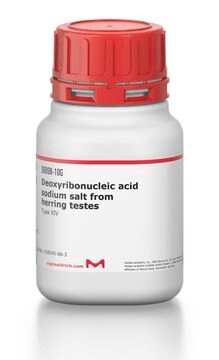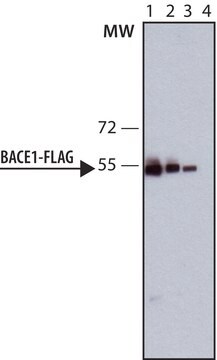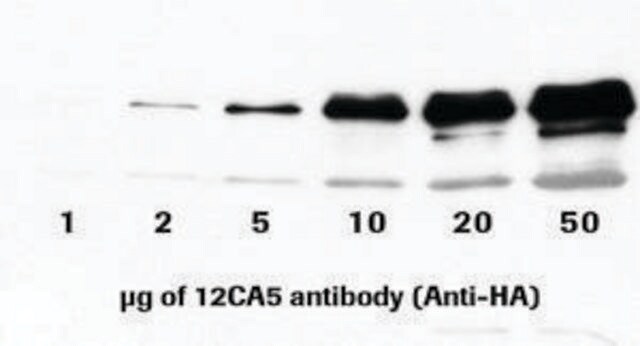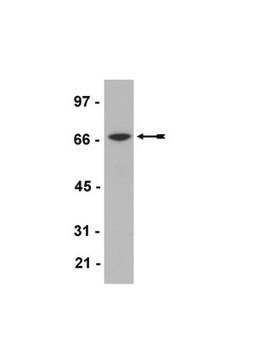H6533
Monoklonaler ANTI-HA-Antikörper
clone HA-7, purified from hybridoma cell culture
Synonym(e):
Anti-HA, Anti-Influenza-Hämagglutinin
About This Item
Empfohlene Produkte
Biologische Quelle
mouse
Qualitätsniveau
Konjugat
peroxidase conjugate
Antikörperform
purified from hybridoma cell culture
Antikörper-Produkttyp
primary antibodies
Klon
HA-7, monoclonal
Form
lyophilized powder
Verpackung
vial of 0.5 mL
Konzentration
5-11 mg/mL
Methode(n)
western blot: 1:4,000 using using HA tagged fusion protein expressed in bacteria, and ECL immunoblotting detection reagent
Lagertemp.
2-8°C
Suchen Sie nach ähnlichen Produkten? Aufrufen Leitfaden zum Produktvergleich
Allgemeine Beschreibung
Spezifität
Immunogen
Anwendung
- in immunopreciptation and immunostaining of human member 9 of solute carrier family 38 SLC38A9 transfected in HeLa cells
- in immunoblot detection in transfected A375 cells
- is suitable for immunoblotting of nucleosome assembly protein NAP1L1
Physikalische Form
Angaben zur Herstellung
Sie haben nicht das passende Produkt gefunden?
Probieren Sie unser Produkt-Auswahlhilfe. aus.
Signalwort
Warning
H-Sätze
Gefahreneinstufungen
Skin Sens. 1
Lagerklassenschlüssel
12 - Non Combustible Liquids
WGK
WGK 2
Flammpunkt (°F)
Not applicable
Flammpunkt (°C)
Not applicable
Analysenzertifikate (COA)
Suchen Sie nach Analysenzertifikate (COA), indem Sie die Lot-/Chargennummer des Produkts eingeben. Lot- und Chargennummern sind auf dem Produktetikett hinter den Wörtern ‘Lot’ oder ‘Batch’ (Lot oder Charge) zu finden.
Besitzen Sie dieses Produkt bereits?
In der Dokumentenbibliothek finden Sie die Dokumentation zu den Produkten, die Sie kürzlich erworben haben.
Kunden haben sich ebenfalls angesehen
Unser Team von Wissenschaftlern verfügt über Erfahrung in allen Forschungsbereichen einschließlich Life Science, Materialwissenschaften, chemischer Synthese, Chromatographie, Analytik und vielen mehr..
Setzen Sie sich mit dem technischen Dienst in Verbindung.













